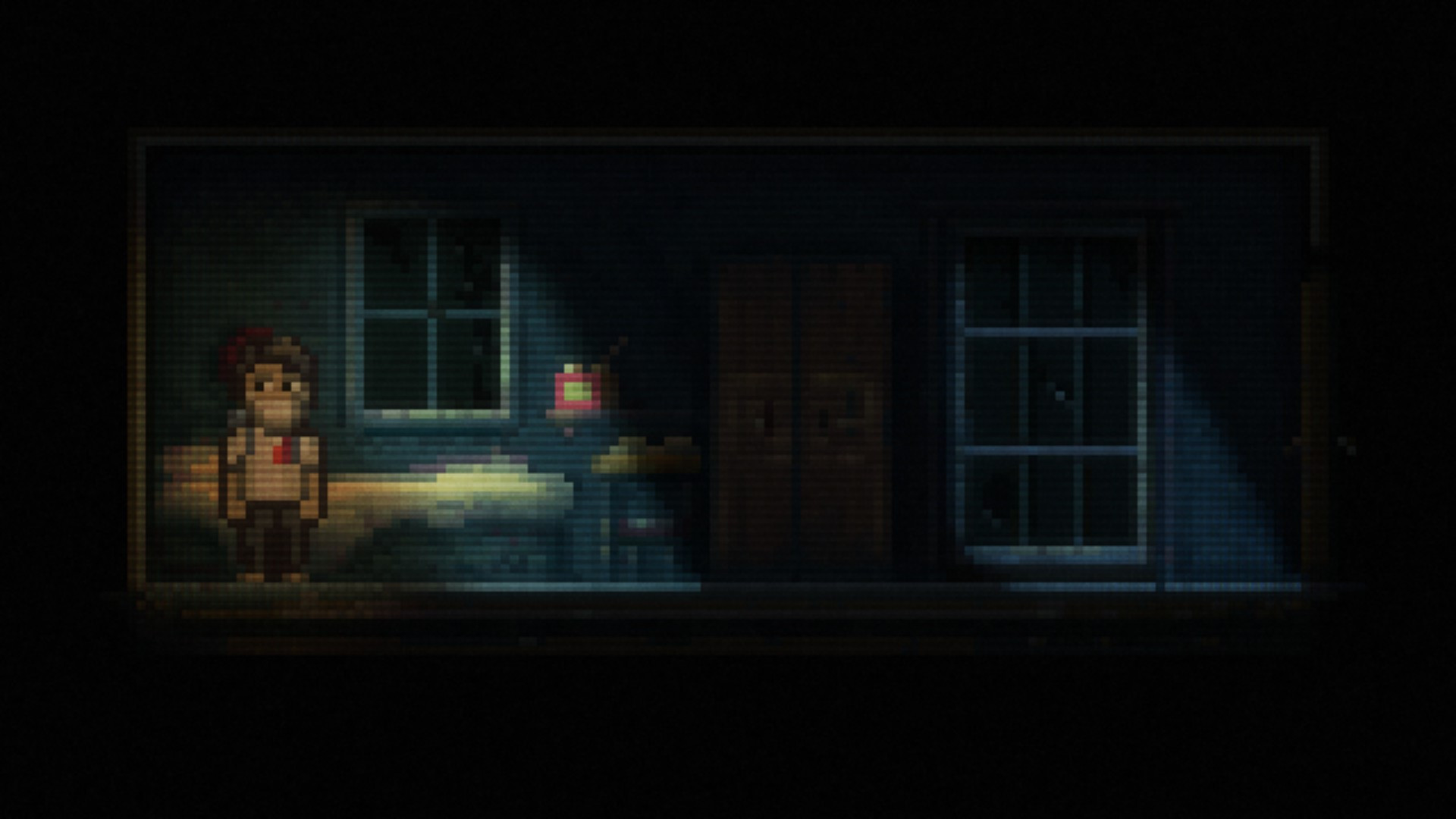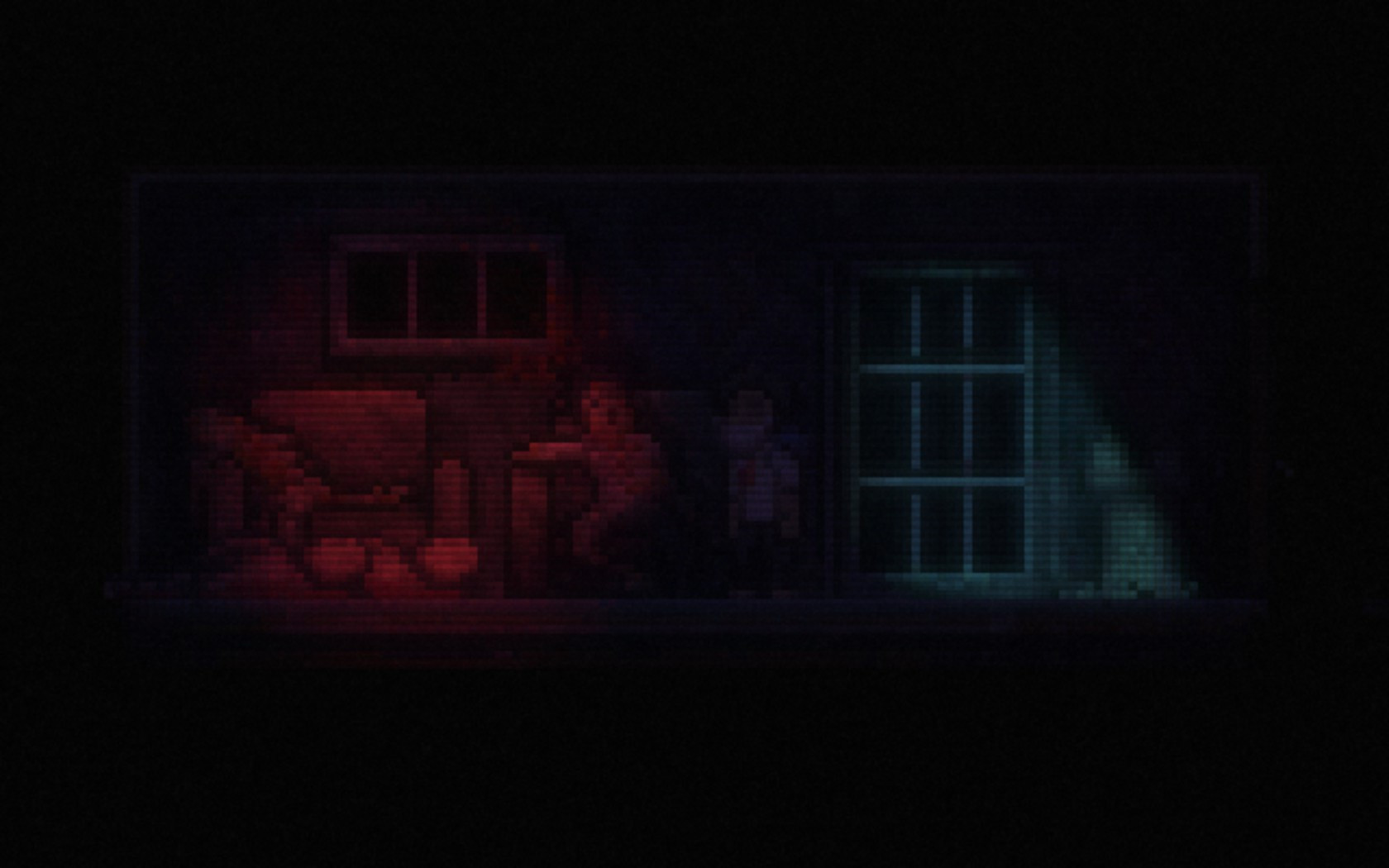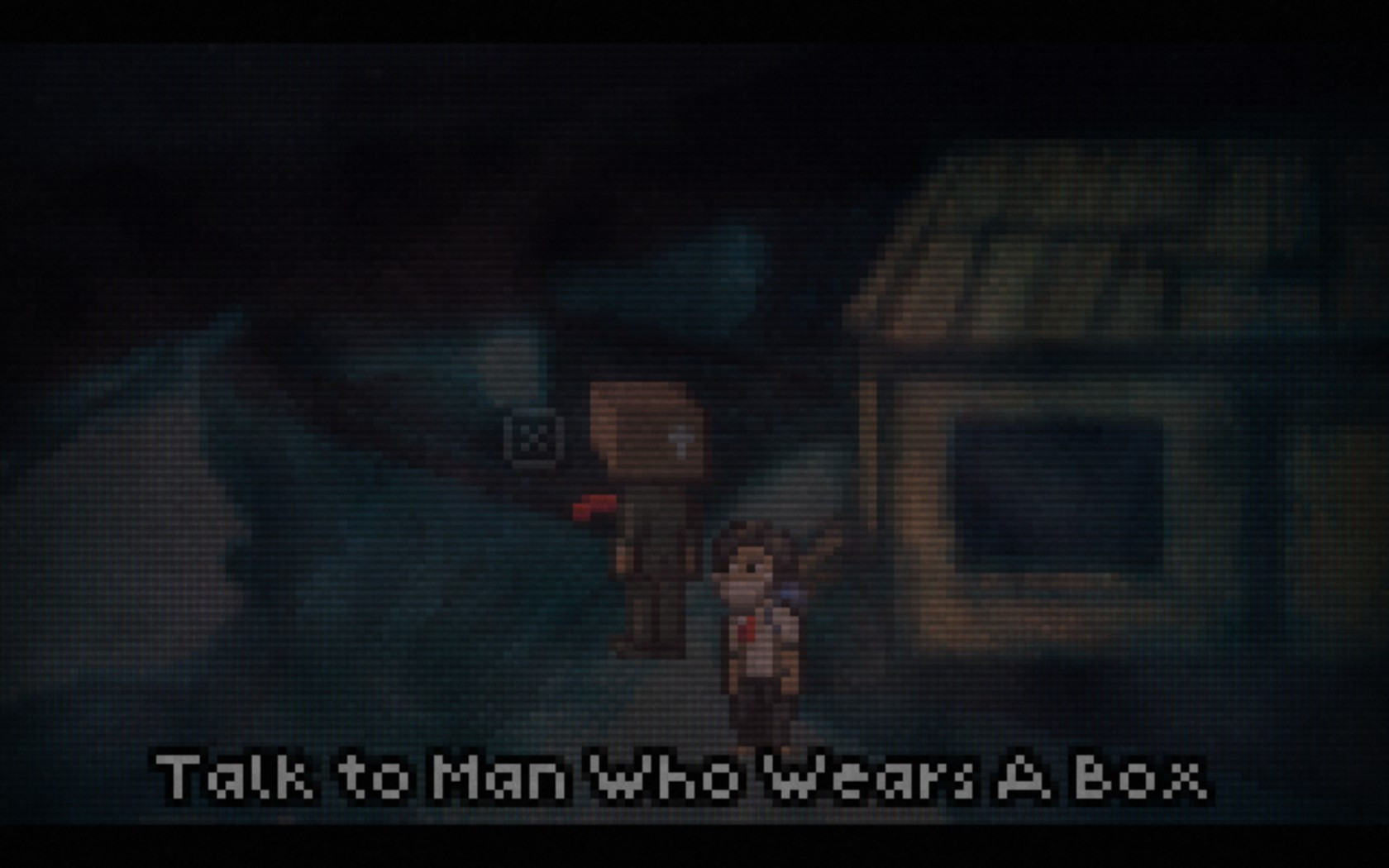
About SqncBrk
Sequence break is the act of obtaining an item out of order or performing certain action out of order. In…

You wake up in the small side apartment on the second floor. The radio talks nonsense, there’s no food and all your neighbors are now scary pixelated monsters. It’s hard to tell if they have become zombies or some other shit has happened to them. The game isn’t heavy with going on the specifics of what is actually happening. This is an abstract story of a nameless protagonist, swallowing pills that change his dreams and exploring the building and its nearest surroundings.

Going outside is dangerous and challenging. Monsters can kill you easily; avoiding them is the preferred course of action. Ammunition is scarce. Rooms and corridors are dark. Batteries for the flashlight don’t last long. On top of that the character has to eat and sleep. And take those pills before having psychedelic dreams in which he talks with a man wearing a box for the hat.
A deconstructed version of classic survival horrors, Lone Survivor keeps only the most core features of them. 3D world is among them. This is a rare for 2D metroidvanias, most of them use a door for nothing more than a couple of completely separate rooms. Lone Survivor makes use of its scene. Corridors go around the floor, intersect with each other and make a dense maze that you have to study. Two sections of hiding in the shadows, turn to the left, then to the right, enter the gaping fleshy hole in the wall, find the new key, some canned fruit salad or even another survivor. So, no, you’re not really lone. But at least you’re survivor. You’ve got that gas can for the stove. There were a few very scary zombies in that dark corner where you’ve found this can, but you’ve managed to pass them unnoticed. Tonight you’ll eat some cooked ham. Who knows if you’ll be that lucky tomorrow?

Packing a lot of action on such relatively small map makes the game tense. The best compliment for a survival horror. The requirement of enough variety and challenge forces most metroidvanias with the flat world map to resort to some kind of red herring like gigantic elevators in Metroid. It’s a neat way of separating the parts of the world and still preserving the integrity of it. Extravagant ride on the carriage with undead horses in Bloodborne is essentially the same thing. Of course it’s more noticeable this way. You can now separate the “main” part of the world from this one. What you didn’t notice yet though is that “main” parts consists of such “separate” ones. Their connections are more believable. They could be one level from a technical standpoint, they could be separate ones — it doesn’t matter. You can still percept them as a whole. Lone Survivor is very careful with its level design. Architecture may make no sense when put in the actual 3D perspective, but the protagonist seems to be delusional anyway.
A hero's face is covered in a mask, that can be easily mistaken for a smirk. As if those pills weren't enough to reassure that he is totally deranged.
A small geographical anomaly is easy to overlook when you try to precisely target a zombie slowly coming at you. Perhaps, even easier than the supposedly unexpected subplot-which-was-the-actual-plot-you-fool. The game rather mimics the melancholic tone of Twin Peaks than its mystery; to the point that it manages to end anticlimactically. Those green, red and blue ending sequences are still better than their counterparts in Mass Effect 3, but they too are nowhere near the legitimately scary journey through post-apocalyptic nightmare that has preceded them.